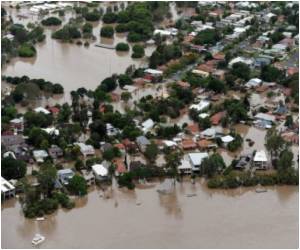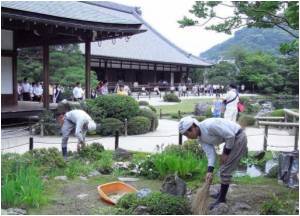
Government assistance was scant and with little prospect of employment the 26-year-old mother started selling video CDs of the disaster to tourists who have been flocking to the mountain north of Yogyakarta.
"It's a strange feeling. I'm selling video CDs about my devastated home to tourists," Suwarni told AFP.
"I have no choice. Although it's difficult for me, I have to get over it and bring some money to my family."
Tourists from around Indonesia and the world have been coming to Merapi to see the devastation first-hand since the threat level was downgraded in December, officials said.
The eruptions were the biggest since 1872 and the 2,970-metre (9,740-foot) peak is still rumbling deep within its molten core. The official alert level now stands at "vigilant", but the eruptions have stopped.
Advertisement
The scene is still one of utter devastation, especially on the southern slopes where pyroclastic flows of gas and debris caused most of the destruction.
Advertisement
Suwarni's family kept dairy cows before the disaster. Now she sells her videos for about 40,000 rupiah ($4.40) each and makes just enough to get by.
Dutch tourist Hans Van Der Weide, 62, said he could barely believe how the landscape, once lush and green, had been transformed.
"I wanted to see the impact of the eruptions because I'd been here before... It's unbelievable that everything here has been destroyed," he said.
US geography student Kyle Miller, 21, said he didn't expect to see so many other tourists.
"I was surprised to see so many people on the mountain and walking around in the ruins... I saw what seemed to be thousands of people arriving to simply see an area of devastation," he said.
"I hope that the money being generated by parking fees, as well as souvenir and food sales, will somehow benefit the community and speed up the process of rebuilding the lives of the locals who lost so much."
Kinahrejo's most famous resident was Merapi's traditional "guardian", Grandfather Marijan.
The old man, appointed by the sultan of Yogyakarta to tend to the volcano's restive spirits, ignored warnings to evacuate his home and died in the first seconds of the first eruption. His sacrifice has become local legend.
One of his daughters, Panut, 59, now sells cigarettes, instant noodles and drinks to tourists.
Even before the eruptions, Marijan's house was a popular attraction for curious visitors. Panut said visitor numbers had tripled since his death as people come to pay their respects or simply gawk at the destruction.
"Although a lot of tourists come here I'm still poor because my house was destroyed," she said.
"The government has to give us new homes."
Indonesian day-tripper Cahyo Sunarko, 22, from the Javanese town of Magelang, said he was offended by tourists who came to Merapi only for leisure.
"You can see that everything here has been devastated. It's a perfect area for reflection that God can take away anything in seconds," the student said.
Merapi is not the only disaster zone in Indonesia that is popular with tourists.
The mud volcano known as "Lusi" also attracts a lot of visitors to Sidoarjo district in East Java province, where the geyser began oozing from the bowels of the earth on May 29, 2006.
The mud -- a hot, bubbling, grey substance the consistency of wet concrete -- has already wiped out 12 villages, killed 13 people and displaced more than 42,000.
Source-AFP











